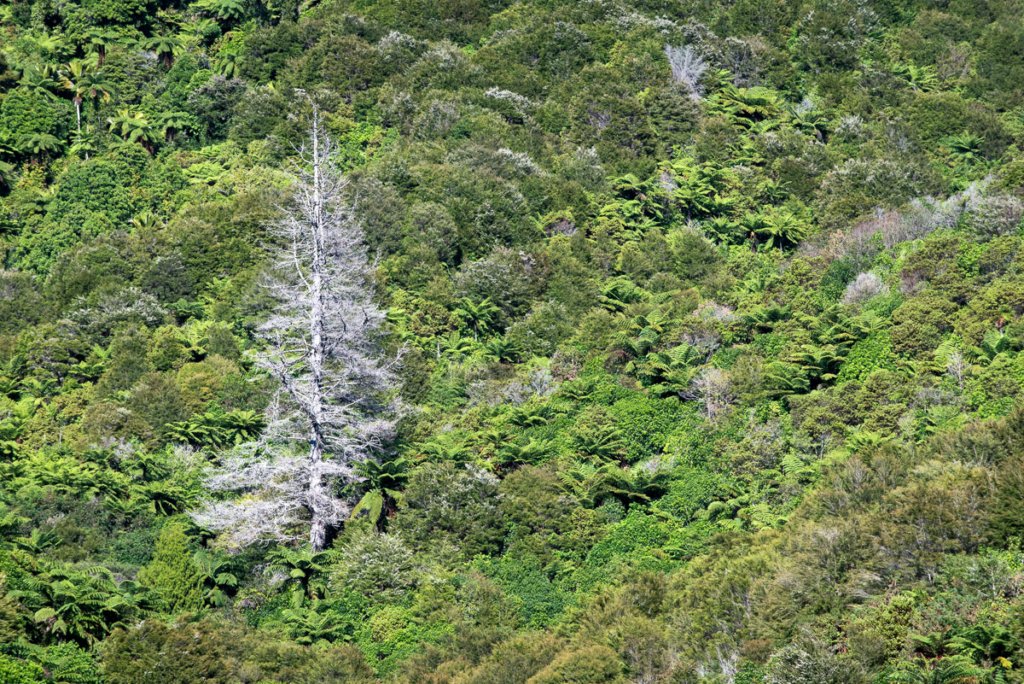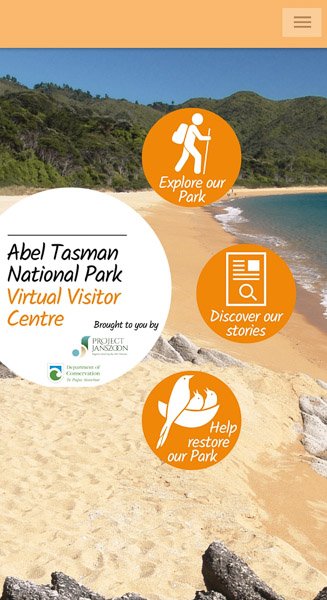Wilding pine trees are a serious problem in New Zealand. In the Abel Tasman National Park it is estimated that at their peak, wilding conifers like radiata (Pinus radiata) and maritime pine (Pinus pinaster), had infested 10 thousand hectares, or nearly half, the park. Local tourism operator Darryl Wilson remembers family picnics to Adele Island back in the 1970’s to pull young pine trees as part of an event organised by honorary rangers. “It was a recreational activity as kids, we knew they weren’t supposed to be there and it was fun to pull them out.”
“It was a recreational activity as kids, we knew they weren’t supposed to be there and it was fun to pull them out.”
An ecological disaster.
But pulling a few seedlings was never going to keep pace with the runaway train that is wilding conifers. The unwanted seedlings spread from introduced trees and seeds can be blown many kilometres by the wind. Young seedlings quickly infest an area and once established, the pines compete with native plants and animals for sunlight and water, severely altering New Zealand’s unique landscapes.
“You started noticing one or two pines, poking out, interrupting the skyline, it was visually jarring. Then there were more and more,” says Darryl.
Back in 2007 concerned locals and tourism operators had formed the Abel Tasman Birdsong Trust, realising the community could make a huge difference in the park. The Trust’s aim was to bring back the birdsong. Initially its efforts were focused on trapping but volunteer members soon realised wilding pines were a major problem.
“The Department of Conservation didn’t have the man power, or the funds to deal to the pines and the Trust could leverage the dollars from tourism operators to do greater things. Every dollar we raised could attract more dollars, so the Birdsong Trust provided the vehicle to start nailing the wildings,” says Darryl.
It was a timely intervention. Ecological consultant and now Project Janszoon operations manager Andrew Macalister likens it to a slow-motion train wreck. “Hundreds of thousands of wildings were creeping along the coast and ridges of the park. If we had done nothing the ridgelines would have eventually turned into pine forests,” he says.
Andrew is a man who knows his pines. He has been at the forefront of the fight against wildings in the Abel Tasman and Marlborough Sounds. Despite the fact a few experts believed the pines couldn’t be stopped, in 2011 he helped the Trust apply for funding to a range of national funding agencies, including the NZ Lottery Grants Board, to raise sufficient funds to control pines in the park.
No easy task.
“We had confidence we could get there but we knew it wouldn’t be easy,” says Andrew. There were some enormous trees in the park that had been planted over a hundred years ago by unknowing settlers. Along with the pine plantations bordering the Abel Tasman they had become the seed source for the hundreds of thousands of wildings that followed.
Yet, the big trees were often the easy ones. Wildings rarely grow where you want them. “It’s an enormous physical challenge as you are forced to go where the trees are. It’s usually in a patch of gorse, or half way up a steep gully. Then there’s the wasp nests, thick bush, and rain, cold and sun. Getting rid of them involved lots of hard mahi (work),” says Andrew.
Techniques were refined as the team learnt. Most of the trees were poisoned by drilling into the trunk, and pouring a herbicide into the holes. Others were sprayed from a helicopter. The trees die standing, decaying into the forest floor over time.
A team effort.
Not long after the Birdsong Trust began its work private environmental trust Project Janszoon was launched. Project Janszoon works with mana whenua iwi, DOC, and the community to get rid of pests and weeds, bring back native wildlife and bush, and inspire a culture of care for the Abel Tasman.
“When Janszoon came along we became a bit more ambitious,” says Darryl.
Janszoon was able to help the Birdsong Trust accelerate its work. Since 2011, the over $1m project has seen hundreds of thousands of wilding pines poisoned, stretching from Tinline Bay in the south to Taupo Point in the north. The Department of Conservation (DOC) and Tasman District Council also came on board with support from the Abel Tasman Foreshore Scenic Reserve Fund.
“Ten years ago if you took a boat up the coast all you could see was pine trees, now you struggle to see a single one. People are really noticing the change, I get a lot of comments from visitors because it is so visible, it really hits home what has been achieved,” says Department of Conservation biodiversity ranger Dan Chisnall .
In 2017, 30 hectares of pines at Wairima / Bark Bay was the last major stand of mature trees to be controlled, removing a major seed source, and fire risk. These decaying trees are now a great source of food for kākā, a charismatic forest parrot released in the area in 2019. The birds feast on the bugs living amongst the decomposing wood.
Removing the seed sources was a huge step forward. It meant energy could be transitioned into controlling seedlings. It’s Dan Chisnall’s job to ensure the pines don’t come back. “We need to keep on top of the coning cycle, removing young wildings before they get to maturity. Breaking the cycle over time is crucial,” he says.
Protecting the gains for future generations.
Project Janszoon was launched with an aim to transform the ecological prospects of the Abel Tasman over 25 years. To ensure those gains are protected past that timeframe Project Janszoon and the Government signed the Tomorrow Accord. This agreement means that as transformations like controlling the wilding pines are achieved, the responsibility for maintaining them are handed back to DOC.
The Tommorrow Accord is a win win for everyone says Project Janszoon director Bruce Vander Lee. “Ensuring the wilding pines are controlled into the future is an example of what is possible when everyone works together. It is humbling to have been a part of helping complete the community’s vision. With the Abel Tasman now nearly free of wilding pines, what was a multi-million dollar problem can now be kept at bay for a small fraction of that cost,” he says.
And the community effort doesn’t stop. Alistair Sheat is the current chair of the Abel Tasman Birdsong Trust. He runs a trapline along the park coast and always carries a small handsaw to deal with any wildings he sees. “Volunteers keep an eye out for wildings and if they can’t pull them out they report them to DOC.”
Ultimately, the removal of the pines will allow native forest to recover, transforming the park’s skyline and providing habitat for native species.
New beginnings.
Ultimately, the removal of the pines will allow native forest to recover, transforming the park’s skyline and providing habitat for native species. While the pines have been halted in their tracks, DOC’s Dan Chisnall says there’s at least another ten years of vigilance to ensure they do not get away again. But there are promising signs.
“Nothing grows under a pine forest, all you see is pine needles. But a couple of years after poisoning the pines we are getting the first flush of new native seedlings coming up in the nice dappled light. It’s proof all that hard work was worth it.”
Words: Robyn Janes.
Photography: Ruth Bollongino (fernphotos.com), and Andrew MacAlister.



